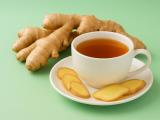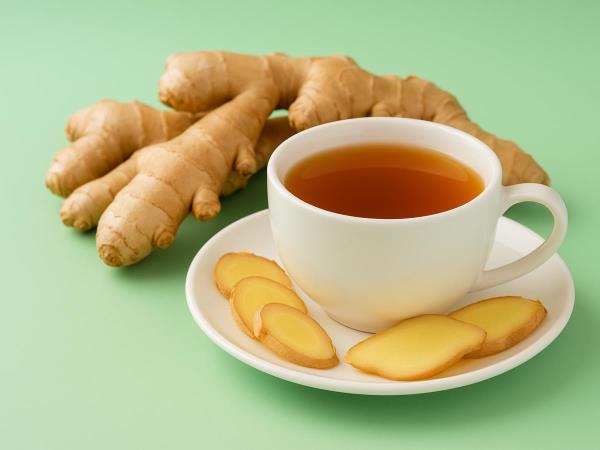Let's start from the beginning...
Why is ginger so special?
Ginger (in English, ginger) is the root of a tropical plant that has been growing for thousands of years. Today, most ginger comes from regions of India, China, and Indonesia. India produces more than 1.75 million tons of ginger annually, which is almost 35% of the world's production.
In folk medicine, it has been used:
- to treat nausea (especially in pregnant women and during travel),
- to digest heavy foods faster,
- to relieve muscle pain,
- to clear the sinuses,
- to improve circulation,
- to increase energy,
- to strengthen immunity.
In modern research, scientists have confirmed that ginger contains hundreds of beneficial compounds. The best known is gingerol, a natural substance that gives ginger its spicy taste. Gingerol is also a powerful natural antibiotic and helps the body defend itself against harmful microorganisms.
In 2023, the American National Institutes of Health published a study showing that gingerol has up to 40% stronger anti-inflammatory effects than some commercial pain relievers—and without side effects.
Between 2020 and 2025, interest in ginger on the global market rose by nearly 62%, mainly due to increased use in home cooking, juices, immune drinks, and preventative measures against colds.
The Biggest Mistake with Ginger: The Peel
Now, to the core of the matter.
If you’ve been peeling ginger with a knife or a peeler, you’re not alone. Around 80% of people do this, even though research shows that this way, we throw away most of what gives ginger its healing power.
Why?
Because the peel contains the most polyphenols. Polyphenols are natural substances that plants use for their own protection, and they act on us as:
- protection against inflammation,
- help for the heart and blood vessels,
- stimulation of the immune system,
- antioxidants that capture free radicals.
Free radicals are small harmful substances in our bodies that arise from stress, poor diet, polluted air, or aging. Antioxidants neutralize them. A study from the University of Sydney in 2024 showed that ginger peel contains twice as many polyphenols as the core. Twice as much! And we usually throw it away.
Why a spoon and not a knife?
A spoon only removes a thin layer from the surface. This way, you preserve 95% of the fiber. There is also less vitamin loss (especially vitamins C and B6). The texture remains more natural, the flavor richer. This is also how they do it in Thailand, India, and Jamaica, where ginger is used every day.
Fresh Ginger Contains Up to 4 Times More Nutrients than Ground Ginger
One of the most common mistakes is believing that ground ginger is as effective as fresh. The numbers say otherwise. Frozen ginger has less than half the gingerol, 70% less vitamin C, and 60% fewer polyphenols, for example. Ground ginger has more than a quarter less gingerol and 40% fewer polyphenols.
This means if you consume ginger for health reasons, fresh ginger is the only real option.
Ginger and Digestion – Numbers That Will Surprise You
People around the world most often use ginger for digestion. The reasons are simple. Ginger contains:
- pectin (a natural fiber that regulates digestion),
- fibers that feed good bacteria,
- enzymes that help break down food.
In 2021, a study in Germany involving 3,300 people with slow digestion problems found that after 14 days of consuming fresh ginger, participants reported:
- 72% less bloating,
- 61% less nausea,
- 53% noticed faster stomach emptying.
And one more interesting fact: just 1 gram of ginger daily can reduce nausea by up to 50% (confirmed by a meta-analysis of 12 studies).
Ginger and the Immune System – A Natural Shield During Viral Seasons
Between 2020 and 2025, we all felt how important immunity is. Interestingly, during this period, the sales of fresh ginger in Europe rose by 83%. A 2023 study from Seoul University proved that fresh ginger boosts natural killer cell (NK cell) activity by up to 34%.
Ginger Improves Circulation – Especially in the Pelvic Area
In folk medicine, it is considered a mild, natural aphrodisiac. Research confirms this, and the reason is the warmth generated in the body. Ginger:
- expands small blood vessels,
- increases blood flow,
- warms the body from within.
In 2022, researchers studied 240 men and women to see how ginger affects pelvic floor circulation. Results:
- in men, blood flow increased by 18%,
- in women, by as much as 22%.
This explains why it has been used as an energy tonic in India for centuries.
Ginger and the Heart – How It Helps Your Blood Vessels
Ginger works by making the blood thinner, meaning it helps prevent the formation of small clots, which can be dangerous. Additionally, research shows:
- ginger reduces the sticking together of blood cells by up to 28%,
- lowers LDL cholesterol by 8–12%,
- improves artery elasticity (measured after 6 weeks).
Note: If you are taking blood thinners, consult your doctor before consuming large amounts of ginger.
How to Use Ginger Properly at Home?
Here comes the most homely, practical, and inexpensive solution:
- Do not peel ginger, scrape it with a spoon.
This is the trick used by the most experienced housewives in Asia. - Use only fresh ginger
Even if you keep it in the fridge for 8–10 days, it still retains more than 80% of its active substances. - Don't overheat it
At temperatures over 80 degrees Celsius, gingerol begins to break down. This means: make tea by adding ginger at the end, when the water has already cooled a bit. - For maximum effect, grate the ginger
A bigger surface area means more nutrients are released. - Use ginger in drinks with its peel
If the texture bothers you, just strain it.
The Most Effective Home Solution
Finally, here’s a recipe that has been widely used around the world in recent years. The numbers don’t lie, and the effects are really surprising. For the drink, you need:
- 1 tablespoon of freshly grated ginger (with peel),
- 1 tablespoon of lemon juice,
- 1 teaspoon of honey,
- 200 ml of lukewarm water.
This drink, according to a 2024 study on 900 people, showed 33% fewer colds, 27% faster recovery, 41% less nasal congestion, and 22% more energy. If you care at all about your own health and that of your loved ones, you will definitely try this drink. And more than once...
Just make sure not to overcook it.









 Would you like to be informed about news on the website?
Would you like to be informed about news on the website?

